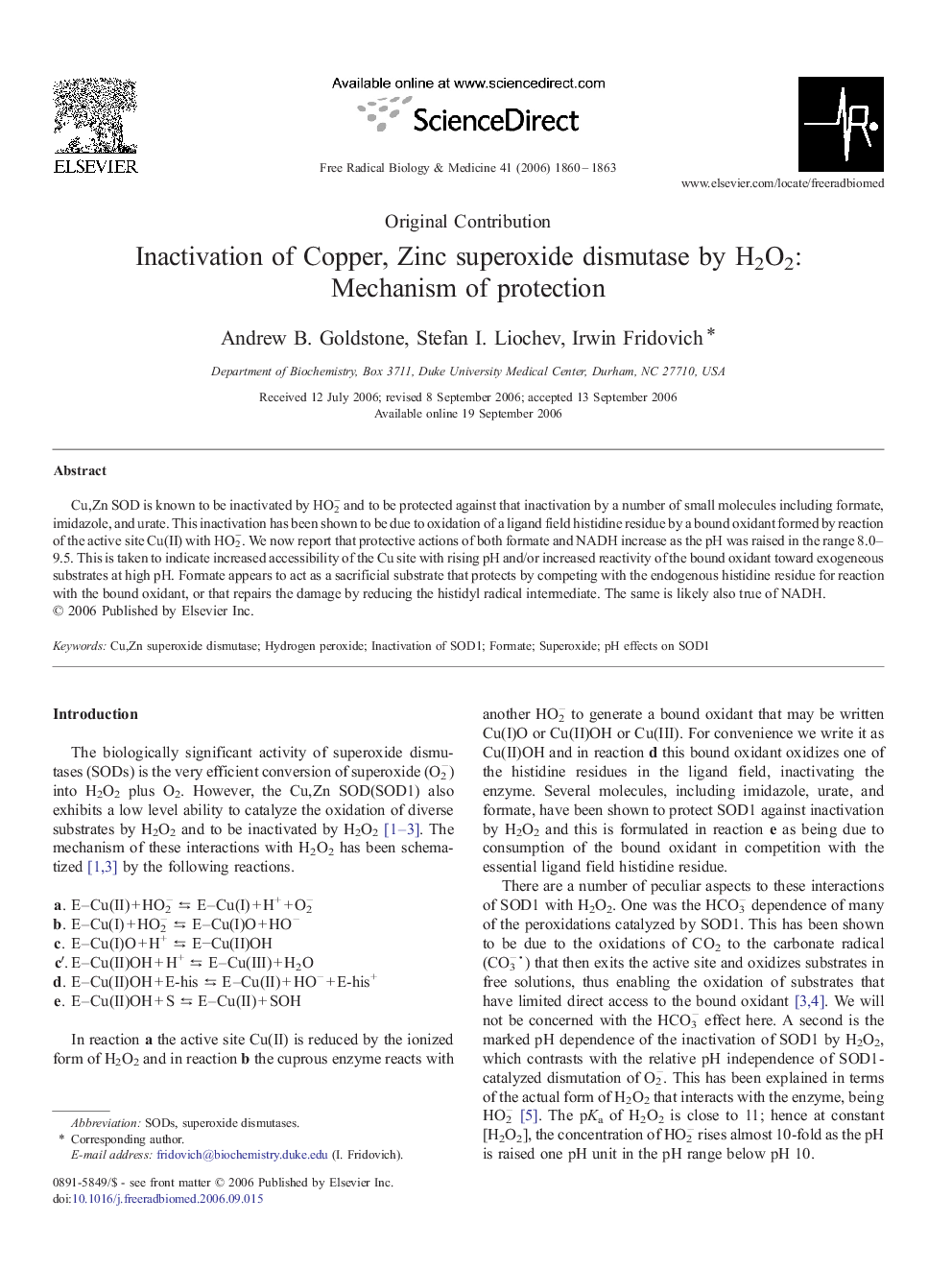| Article ID | Journal | Published Year | Pages | File Type |
|---|---|---|---|---|
| 1911951 | Free Radical Biology and Medicine | 2006 | 4 Pages |
Abstract
Cu,Zn SOD is known to be inactivated by HO2â and to be protected against that inactivation by a number of small molecules including formate, imidazole, and urate. This inactivation has been shown to be due to oxidation of a ligand field histidine residue by a bound oxidant formed by reaction of the active site Cu(II) with HO2â. We now report that protective actions of both formate and NADH increase as the pH was raised in the range 8.0-9.5. This is taken to indicate increased accessibility of the Cu site with rising pH and/or increased reactivity of the bound oxidant toward exogeneous substrates at high pH. Formate appears to act as a sacrificial substrate that protects by competing with the endogenous histidine residue for reaction with the bound oxidant, or that repairs the damage by reducing the histidyl radical intermediate. The same is likely also true of NADH.
Related Topics
Life Sciences
Biochemistry, Genetics and Molecular Biology
Ageing
Authors
Andrew B. Goldstone, Stefan I. Liochev, Irwin Fridovich,
